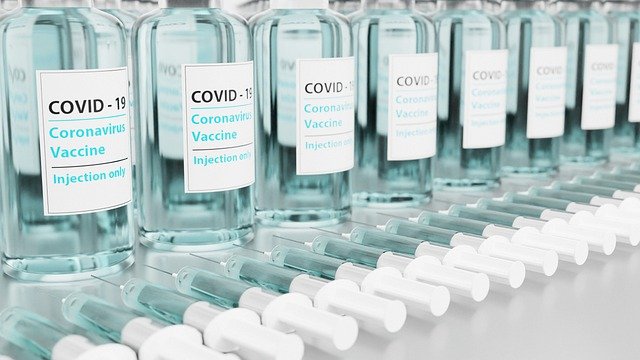Challenges facing the Covid-19 vaccine rollout
Photo from torstenimon via Pixabay.
In many ways, the Covid-19 pandemic has been like a nightmare unfolding in slow motion. It has enveloped the entire world, and the body count keeps rising. Here in the US alone, we’re approaching 500,000 deaths, despite our best efforts to slow the spread.
There are currently two approved vaccines, and we’re steadily working on getting them to everyone who wants one. There are some significant obstacles, though, and getting around or past them is not going to be easy.
Let’s talk about what challenges the rollout faces and when we’re likely to see a return to normalcy.
There is Not Enough of the Vaccine
The main reason the rollout is going so slowly is that there is not enough of the vaccine to get it to the entire country in a matter of days or weeks. Even though the FDA has approved two different versions so far, and more seem to be on the way, the manufacturers cannot mass-produce the vaccine rapidly enough to vaccinate everyone for several more months.
Some medical professionals are advocating for smaller vaccine doses. They feel like giving more people less will still prove effective.
Others don’t agree with that, though, and when medical professionals disagree, it’s hard for the general public to know what to do. If someone decides to accept less vaccine because their doctor tells them to, and then they still contract the coronavirus, lawyers who specialize in medical malpractice will probably have a field day.
There’s an Ongoing Misinformation Campaign
There is also an ongoing misinformation campaign from several different sources. Some fringe news outlets and pundits say the vaccine will do all kinds of harmful things to you, from turning you gay to implanting a microchip in you so the government can track you.
There’s no quantifiable evidence that any of this is true, but there isn’t any accountability in the news anymore. That’s part of why the Q-anon conspiracy reached the popularity levels it did.
When some individuals rely on social media and fringe news outlets for their news, they’re going to believe increasingly farfetched conspiracy theories. Something as scary as the pandemic and mass vaccinations is the perfect storm for misinformation.
There Was No Plan
The Biden administration has also said that the former president did not have an adequate vaccine rollout framework. Biden and his task force have stated that they had to pretty much start from scratch. That has slowed down the rollout even further.
To be fair, a vaccine rollout this large and complex would have been challenging, regardless of what kind of a framework already existed. We have not attempted anything even close to this on a national scale in modern times. We are in uncharted waters, trying to do the best we can, with only advice from scientists and doctors to help us.
Additional Roadblocks
Some people are worried about the side effects, and they don’t necessarily believe when scientists and medical professionals say they’re usually mild.
When people hear about things like headaches, fatigue, nausea, and other reported issues, they don’t want to have to deal with that. They understand, rationally, that getting the vaccine is better than contracting the coronavirus, but they’re still squeamish about going through with it.
Government officials getting the vaccination on live television is probably helpful. Maybe that’s what it will take to convince some people who are on the fence. We need as many people as possible to get the vaccine to achieve herd immunity, so every new person who gets it is a step in the right direction.
What Can We Do to Speed Up the Rollout?
Social media is trying to combat misinformation campaigns in the face of widespread conspiracy theories. Still, for platforms as large as Facebook and Twitter, it’s not easy tackling the conspiracy theory onslaught. They’re doing the best they can to take down any flagrantly nonsensical posts they see, but new ones keep popping up and replacing them.
Other vaccines are in the pipeline, but some seem like they’re not performing as well as the creators expected. The long-awaited Johnson and Johnson vaccine did not perform as well as the two approved ones. If a vaccine protects someone with only 70% efficacy rather than 95%, some people will probably be reluctant to get that one, even if the FDA does approve it.
Also, states are handling the rollout much more than the federal government is. That means that some states are handling it better than others.
Certain states report that individuals are getting the first of the two vaccine shots, but they can’t necessarily get the second one during the designated time. This is not always because the second shots are not available, but rather that there’s general confusion and disorder. Again, it’s the size of what’s happening, which is a real impediment with which each state has to grapple.
Probably the best thing that everyone can do now is to keep checking their state websites to see when appointments to get the vaccine are available. Seniors and those with underlying conditions can usually get it sooner, as can front-line healthcare workers.
As for younger adults and those without dangerous preexisting conditions, all they can do is wait and be patient. If you’re in this group, you need to keep socially distancing and wearing your mask when you go out in public.
That will probably frustrate you since we’re well into the second year of all this right now. This is a nearly superhuman endurance test, and many individuals report having depression and anxiety issues like never before.
Still, we need to remember that the end is in sight, and we can get there if we just wait it out. We will never forget this time, but for now, we’re still experiencing it, and for many, every day is a genuine challenge.

